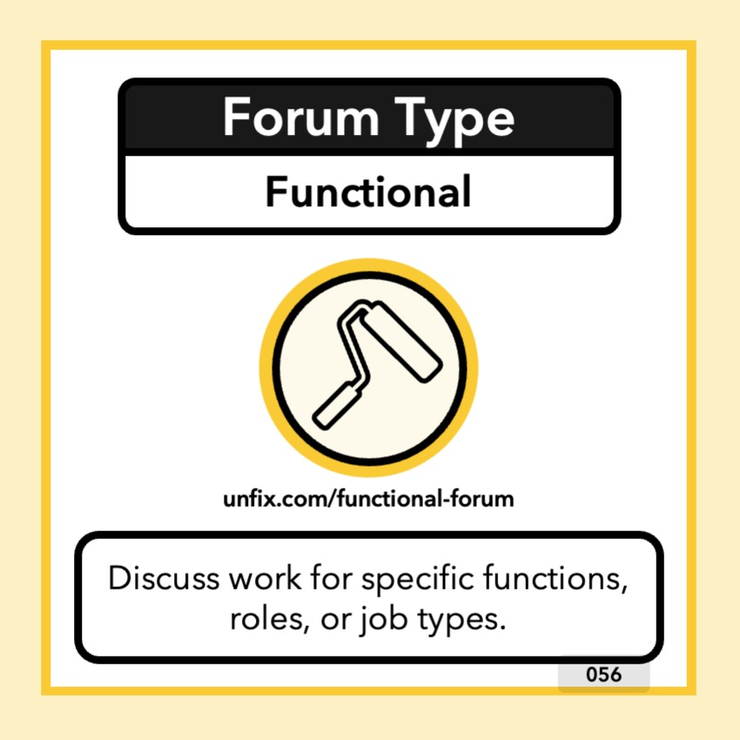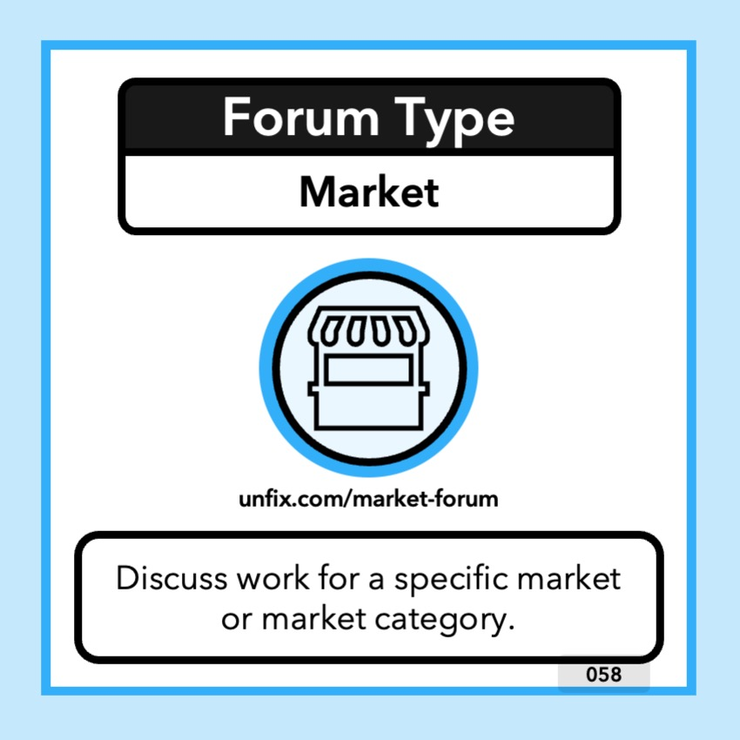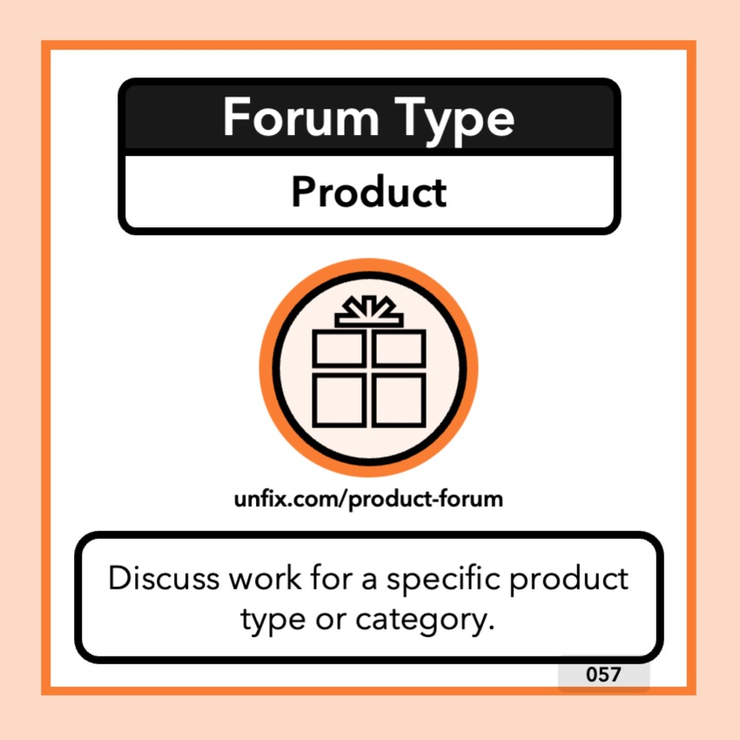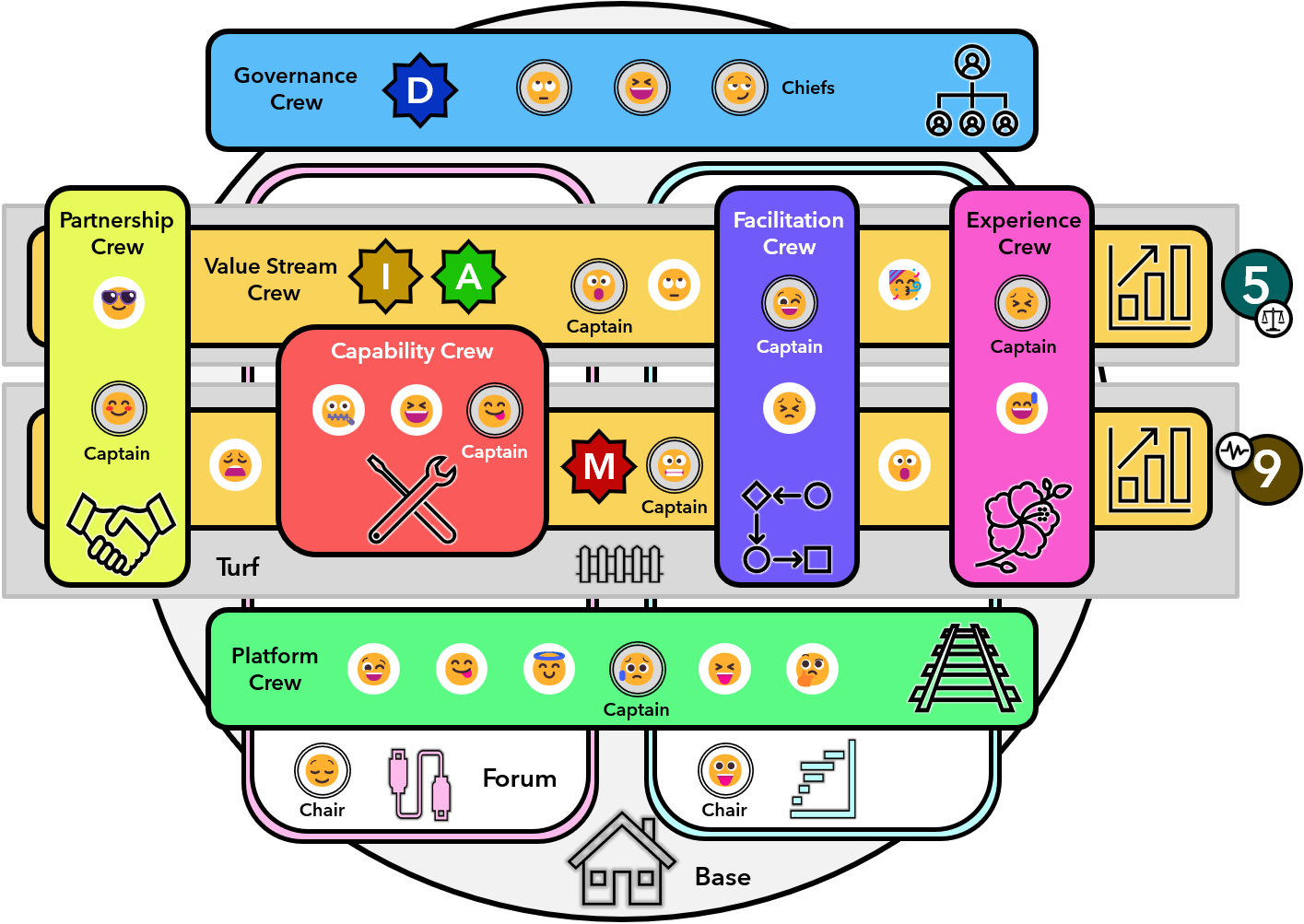
Functional Forum
Forum Type
Coordinate work for specific functions, roles, or job types.
Forum Types: Business Model • Channel • Customer Journey • Functional • Market • Organizational • Product • Regional • Seasonal • Technological
Purpose
The most traditional organization form is the functional structure. It organizes people by department based on the function or role they have in the organization: the sales department, marketing department, development department, testing department, and so on. A functional manager leads each department, and everyone in that department reports to that manager.
The benefit of organizing people by function is that like-minded people love to hang out with each other. In other words, "birds of a feather flock together". This group of like-minded people can discuss their ways of working, learn from each other, take over from each other, etc. However, the main problem of the traditional functional structure is that it leads to silo-thinking and sub-optimization at the department level.
Notes
A Functional Forum is a compromise between two extremes. It is not a traditional functional department because everyone in a Base works in a Crew, not a department. However, we recognize the need for "birds of a feather" to learn from each other and coordinate their work methods. That's what the Functional Forums are for. They are like functional departments but without the functional manager and without anyone actually doing any work in the Forum.
You can set up a Functional Forum for any group of roles, such as developers, designers, testers, product managers, testers, and so forth. You will need a Chair for each Forum but this role does not include the management of people.
Rules / Constraints
The Forum exists only for discussions and decision-making.
The Forum participants do most of their work on Crews, not on Forums.
Nobody on a Forum is the manager of all Forum members.




“In nature we never see anything isolated, but everything in connection with something else which is before it, beside it, under it and over it.”
(Source: Johann Wolfgang von Goethe)












